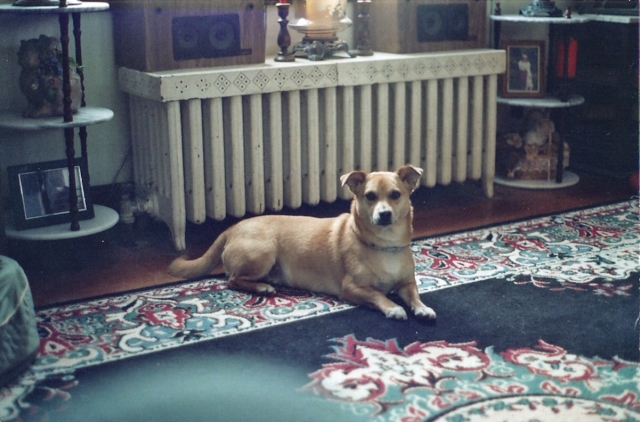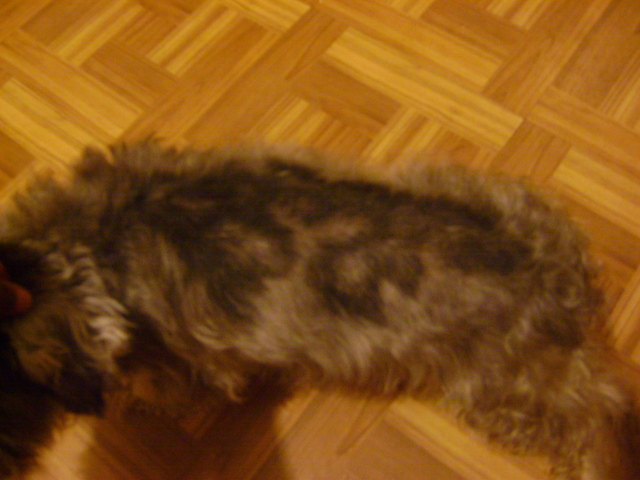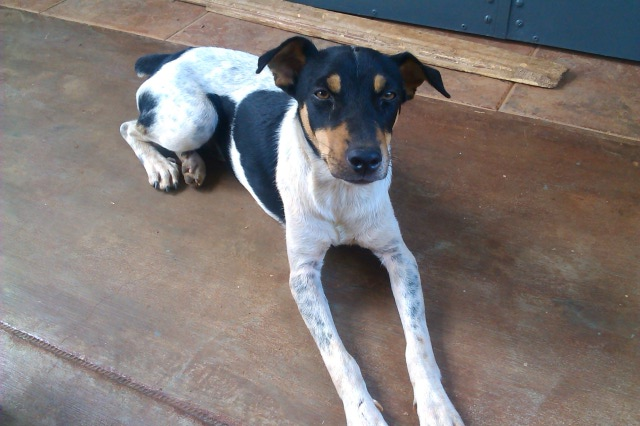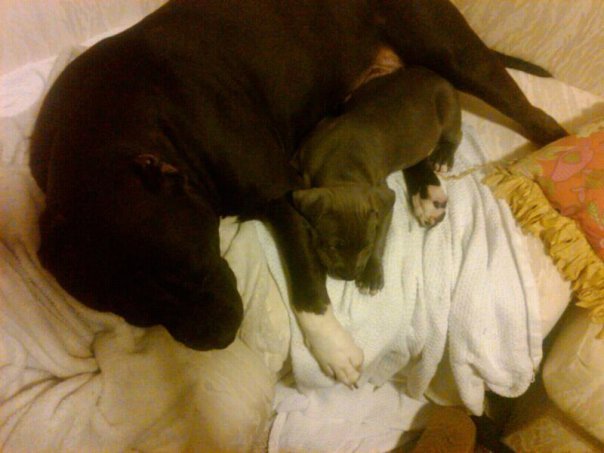QuestionI have a lab, Lucy and my parents have her littermate, Pepper. Both dogs have been spayed. Lucy and Pepper have spent a lot of time together with no problems. Each summer, I spend about 6-8 weeks on a mission trip and my parents keep Lucy. Last summer after about 5 weeks, Lucy and Pepper got into a fight. They were seperated. The dogs had a couple bites on the ears but nothing too serious. The dogs were reunited in the morning and had been fine ever since. About 2 months after this happened, we got another Lab, Indiana. All three have played wonderfully together. Over the past 9 months, I have been staying with my parents about 2 weeks out of the month--the dogs have been getting along fine. Yesterday the dogs got into a fight--and this seemed worse than before. We finally got the dogs seperated. Pepper had a bite on her ear, Lucy had a puncture under her chin and at the base of her ear. When we tried to reunite them the next morning (on leashes) they began growling and lunging at each other. I tried again later in the day which resulted in another fight. I ran inside to get someone to help, when I got back downstairs the dogs were sitting outside looking in the glass door waiting for me to come out as if nothing had happened. I was scared they would start fighting again so I seperated them, (probably a bad idea). We have tried several times now to get them back together while we have them on leashes. They are fine as long as they are about 12-15 feet away from each other, but when they get close enough the begin lunging and growling at each other again. What is the best tactic for us to try to resolve the conflict? Indiana, the youngest lab is very submissive and never targeted by either of the dogs. Lucy is the dominant dog at our house and Pepper is the only dog at her house. However we have never really had any dominance issues with them before. My main concern is that I am leaving again in 2 weeks for another 6 weeks and hate to leave my parents with this problem. Thanks for all of your help!
AnswerHow old are the girls, Haley? Often, aggression between females is worse than aggression between males. It sounds as if both of them think they should be alpha and that's most likely why they are fighting. Lucy considers herself to be alpha at your house, and Pepper considers herself to be alpha at HER house. When you put them together, neither of them wants to submit to the other one. Usually, it's not a bad idea to just let the dogs fight it out - dog fights are more often than not more noise than anything else. They sound far worse than they actually are. However, if there is blood, they may be past the point of working it out through posturing and who can make the most noise. Ears bleed easily, so I wouldn't be too concerned with a few bite marks on the ears, but if they are actually tearing into each other and causing blood elsewhere, you may want to hire a behavioralist/trainer to help you out. Without being able to see them in person, it's very difficult to be able to give advice in this situation. You might have to get Cesar Millan to come out and help you!
When they start growling and acting out towards one another, what do you do? They need to know that fighting is unacceptable, no matter what their reasons for wanting to fight may be. I would say that if you cannot allow them to resolve the conflict between themselves, supervised of course, in case it gets out of hand (and I *think* you probably can, going by the statement that you made about them sitting looking in the glass door at you after a fight), then you need to start correcting both dogs severely for so much as lifting a lip towards one another, and praising them for being nice.
For that I would get them each a prong collar. Prong collars are designed to fit snug, right up behind the ears, like this:
http://www.leerburg.com/Photos/prong-shift.gif
http://www.leerburg.com/Photos/prong-6.gif
http://www.leerburg.com/Photos/prong-5.gif
A size small or medium is fine for a lab. I prefer the regular style collars to the ones with a quick release on the chain. There have been stories about the quick release snaps coming loose, causing the collar to come off the dog, and that would not be a good thing in your situation. I also belive that the quick release makes the collar more difficult to use in general. PetsMart sells the quick release collars, so if you have a Superpetz or Pet Supplies Plus store in your area, go there. I like the Hamilton Sterling brand of collar that is sold at Superpetz. To take the collar on and off, you squeeze one of the links together and pull it apart; it does not go on over the dog's head like a choke collar (which are THE most inhumane collars on the market, in my opinion). Despite its looks, a prong collar will not harm the dog unless it is fitted too loose; then it has the potential to poke into the dog's neck when the leash is pulled, instead of distributing a 'pinching' action all the way around the neck (which simulates the way a mother dog corrects her puppies).
This picture illustrates the proper way to put on and take off the collar:
http://www.leerburg.com/Photos/prong-3-2.gif
Once you have a properly fitted prong collar for each dog, teach each of them what a clicker means. This is very simple. Get a clicker, get a bunch of treats, and throughout the day randomly click the clicker and give the dog a treat. It shouldn't take more than a day for them to come running from another room when they hear the clicker. Once they know what the clicker means, you can try the introductions again. Start out 12-15 feet away, before they start to become aggressive towards one another. Click the clicker, give a treat, and verbally praise the dogs (each owner should do this for their own dog) for looking at the other dog, sniffing in the direction of the other dog, or basically doing anything except being aggressive. The moment a dog lifts a lip, growls, lunges, barks at the other dog, then the owner of that dog should say "NO" and jerk the leash fairly hard to administer a correction. The leash should be slack at all times except for the correction; meaning that it's slack before, is tight for half a second, and then is slack again. Immediately after the correction, unless the dog is still acting out (in which case the correction was not strong enough), begin praising the dog again. If the dog is still acting out, your correction was not strong enough and you'll have to repeat "NO," stronger jerk, then praise. For aggression, you have to use a much stronger correction than for everyday obedience, because the dog is so focused on the object of the aggression, that light 'corrections' are actually not taken as corrections, but instead spur the inappropriate behavior on.
Good luck and please let me know how things go and if there's anything else I can help you with!
Kristen

 mixed breed dog
QuestionSweetie Monster
QUESTION: hi this may be
mixed breed dog
QuestionSweetie Monster
QUESTION: hi this may be
 Thining hair on back/back hair darkening
Question
Dogs Back
Please Help!
I have a 4 year miniatu
Thining hair on back/back hair darkening
Question
Dogs Back
Please Help!
I have a 4 year miniatu
 Dog breed confusion
Question
photo of Toby 1 photo of Toby 2
H
Dog breed confusion
Question
photo of Toby 1 photo of Toby 2
H
 2nd Dog
Question
Winston
Hi, I have a beagle/bassest hou
2nd Dog
Question
Winston
Hi, I have a beagle/bassest hou
 Dog aggression towards puppy
Question
The father and his pup
My older dog is an Amer
Dog aggression towards puppy
Question
The father and his pup
My older dog is an Amer